|
|
|  DSH 5489 P' N1 c" i% s0 S" y) f DSH 5489 P' N1 c" i% s0 S" y) f
+ J, i) d4 l; ]! P4 U; d0 A$ Y
| Application of IEC 60320-1 type appliance inlets4 `# R* h0 a$ ]! z/ l" s
| 1.5.2, 4.5.1
+ P0 u* V" u6 K) C- O | 60950(ed.3)) x9 ]5 w. K: {7 ]
|
1 z& d& @$ s# P& \4 Z& R
Standard(s):1 ?& u& E4 k2 m; b
IEC 60950:1999: Z5 a4 N/ z% i0 I3 d
Sub clause(s):
$ x3 w: j- Z# E# _5 I# q1.5.2, 4.5.1
0 [2 z1 ]" J/ @. v. z7 K) TDec. NO.
8 q: V: x. F; j Z5 j$ cDSH-5483 I# g4 C9 M0 n$ X
Subject:
* e" |' j$ I, g6 MApplication of IEC 60320-1 type
' w+ K$ C i8 q' B5 lappliance inlets! g5 }* Y$ C4 B0 K) j& j( |
Key words:
1 h8 v2 s _. |% d. E) t---0 L- k: h% ?; `
Decision taken at the 41st/ p. }9 F1 G @7 b
CTL meeting.
; t; z. o8 R" F; Q! w. ?$ }6 m+ JQuestion:
* ?- ]- o; p3 C% XBackground:2 |/ y4 |3 O+ B* {
An increasing number of Notebook PCs require AC Adaptors to provide output power of up to 150 W2 h; l7 p, L0 U- f6 m: y/ s
at an ambient of up to 40 °C (due Pentium-4 devices). Although designed with a very good efficiency,
$ \% y, i! t9 C0 u$ n, R; s9 xthe losses still result in high operating temperatures.
5 w+ z& d8 U/ T D+ |- y% {Problem:
2 f8 K. b1 n7 t; AIEC 60950:99 refers in several subclauses and in Annex P to IEC 60320 series as relevant IEC+ K9 `& w( B9 ?$ O
component standard for appliance inlets.
0 ~" g7 Q: J- MHowever, there aren't any specific temperature limits for appliance inlets specified in table 4A parts 1
- \/ L8 ~5 Z* j2 c( n4 W5 H. H, I! @and 2./ Q- A- V9 O, w& @ J4 J, w
This results in a non-uniform interpretation whether:
* J# E2 D3 w3 H" j(a) the temperature limit of external surfaces of equipment which can be touched (95 °C8 N; w1 V; G9 m* i$ e
for the plastic housing of the appliance inlet)
$ o0 A3 ^: x a; H% }- cOR
' t4 l4 ~' b! ?) F& ]" W(b) the temperature limit of IEC 60320-1 (70 °C for the pins of the appliance inlet for cold% T$ j& X; o+ m, W' ~6 D
conditions)
6 R8 b( O+ v" ?* Oshall be chosen for the assessment of the maximum temperature of the appliance inlet.
& d: o j6 t& G2 J4 AA clarification for following would be helpful:
; ~! X9 Y N7 S: Z( `4 O+ I(i) Is (only) the maximum temperature of the appliance inlet housing to be measured?# A/ j- V# q! s
OR
- S0 p. G! i5 z( ^(ii) Is it necessary to measure besides the temperature of accessible surfaces as well
$ m( s# Q1 i( y6 F& k( Mthe maximum temperature of the pins of an appliance inlet (test location as required3 f( o+ f \7 Y- Q
according to IEC 60320-1)?7 b5 v5 d$ l5 m) b0 u) j3 |
Decision:
8 N0 h0 F; L! KFor testing of a product incorporating IEC 60320-1 type appliance inlets, the temperature limits and
8 L' V5 T! p- N; B( n# \1 Hlocations for temperature measurements as described in IEC 60320-1 shall apply:- B. V J3 r& i, d8 k7 V
• 70 °C maximum pin temperature for appliance inlet for cold conditions" t' s4 m/ D, g& a; }( y
• Test location: Base of the pin (part of the pin where it protrudes from the engagement face)# Z- D6 f W: j' P- z6 R$ q9 t
The temperature rise shall be determined at the maximum room ambient temperature as declared by8 T. m( d. @1 t, s! p3 t
the AC Adaptor's manufacturer.& ?7 b9 q9 E! K8 }. o
& \3 n5 a3 I3 q: D4 p, ~; ?8 n8 K0 Z5 E
& M6 `6 h% Z3 T, f$ L |
本帖子中包含更多资源
您需要 登录 才可以下载或查看,没有账号?注册安规
x
|



 窥视卡
窥视卡 雷达卡
雷达卡 发表于 2012-11-6 14:41
发表于 2012-11-6 14:41
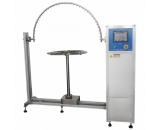

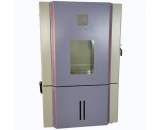

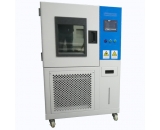

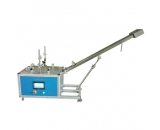

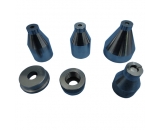






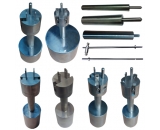
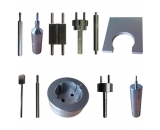
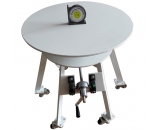
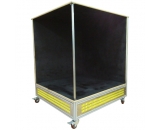

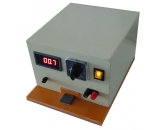
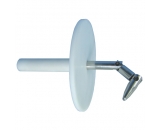
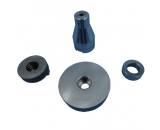
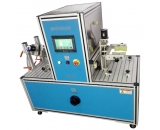
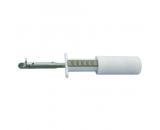
 提升卡
提升卡 置顶卡
置顶卡 沉默卡
沉默卡 喧嚣卡
喧嚣卡 变色卡
变色卡 抢沙发
抢沙发 千斤顶
千斤顶 显身卡
显身卡 发表于 2014-10-31 09:28
发表于 2014-10-31 09:28














